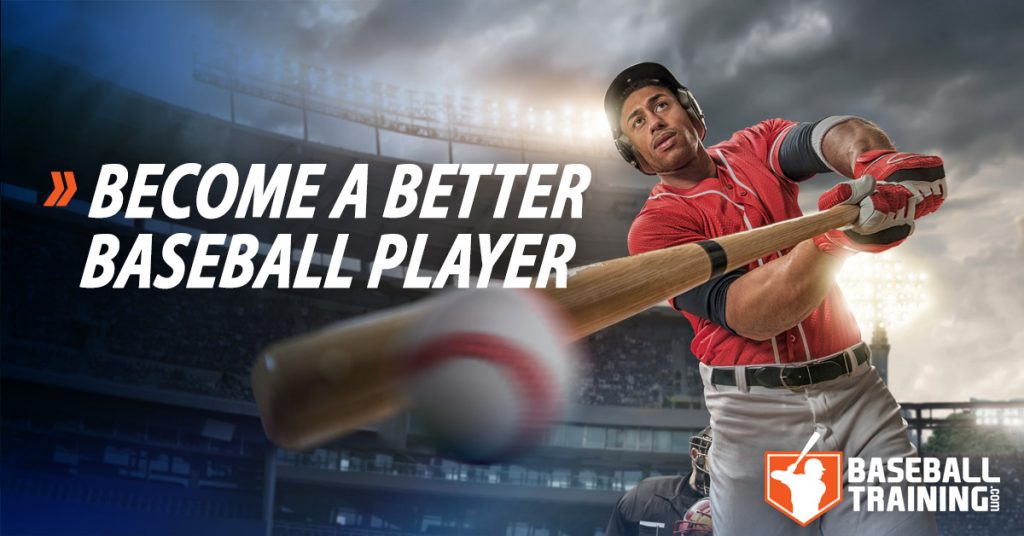If you have been following along, you will have seen me consistently reference the four main pillars of movement associated with properly training baseball players in a sport-specific way.
As a refresher, here they are:
- Locomotion
- Rotation
- Throwing
- Changing levels
If you haven’t already, I would highly suggest you check out the previous articles already done on rotation and throwing.
In this article, my primary aim to explain what “changing levels” means from a baseball-specific perspective, and then also how we can translate that into a gym setting so that you can become a better baseball player.
The reason I say all-round is that maximizing your ability to change levels is something that can impact every position at any point in the game.
How so?
Well, let’s talk about the mechanics of it all so you are caught up to speed.
What is Changing Levels?
Levels changes are what occur when a baseball athlete performs a countermovement before a jump, falls and gets up, goes for a grounder, or changes direction from a crouched position to a top speed run (for example, you’re crouched down at first base and then when you decide to steal you will be standing tall while running at top speeds).
This crucial movement pattern is constantly seen during game setting in baseball, which is why it needs to be discussed and broken down at length in order for you to maximize your baseball workouts and become a better player.
Looking at The Mechanics
In order to properly train level changes in baseball athletes we need to assess the movement – if we don’t assess the movement, we can’t make the appropriate decisions that would allow us to get a result that will manifest itself out on the field.
Put another way, there is a difference between “training” and “baseball training” – if we don’t analyze the movement, we can’t be certain about actually increasing athletic performance.
Level changes require flexion of the legs, hips, and even the spine to varying degrees to lower the body’s center of mass. Even when significant knee flexion is involved, the hips do most of the work to control level changes in sport.
Relying on your posterior chain to do the heavy lifting makes a lot of sense for your body to naturally do since it involves some massively strong muscle groups such as the hamstring, glutes, and paraspinal muscles.
Most injuries in non-contact sports involve those three muscle groups in one way or another, so training them not only makes sense for performance, it also makes sense for ensuring injury prevention.
In baseball (and any sport really), level changes will use two different bases of support – the staggered stance and the parallel stance.
On the left, you can see the parallel stance, and on the right, you can see the staggered stance.
Both of these support bases are used when getting up off the ground, changing directions for agility, getting ready to jump for a ball, or lowering the body to catch the ball.
The staggered stance movements are much different than the parallel stance movements. The staggered stance requires more coordination and more athletic precision overall. A perfect example of this could be infielders who need to field fast-moving low grounders that require a staggered-stance in motion but also extreme precision to catch the ball (like in the above right picture).
Training this appropriately will not only allow you faster level changes to stop more balls, but it also offers you the ability to execute very fast direction changes to catch them more often as well.
From a strength and conditioning perspective – what stands out most about the staggered stance is the single leg and single hip dominance of the entire movement. Although both feet are on the ground, only one of the feet are taking the majority of the load when either trying to decelerate or accelerate the body.
This single leg dominance and offset loading between legs isn’t addressed in most traditional two-leg strength training movements (such as the leg press). It is this type of analysis that allows us to select better exercises more suitable for baseball performance, instead of just saying things like “I need stronger legs” – sure you do, but how, where, and why?
If you can answer those questions, then you’ll start moving in the right direction for a more purposeful workout, and ultimately the goal of becoming a better baseball player.
What we are left with is razor sharp training logic with very simple application methods.
Traditional movements such as squats, good mornings, kettlebell swings, and deadlifts are great for training the parallel stance through symmetrical loading and movement patterns.
Whereas exercises that could be deemed as more functional for the staggered stance aspects of baseball performance would be split squat variations, single leg Romanian deadlifts, step ups, lunges, and the single leg 45-degree back extension.
Incorporating ideologies from both of these tactics (symmetrical and asymmetrical loading) is something that should be a part of your entire year’s training program design and overall periodization strategy.
Level Changing Baseball Workouts
PARALLEL STANCE WORKOUT
A: Conventional barbell deadlifts: 4 x 6 with two-minute rest periods.
B: BB Good mornings: 3 x 12 with 90-second rest periods.
C: Reverse hyperextensions: 4 x 12 with 90-second rest periods.
STAGGERED STANCE WORKOUT
A: Staggered stance one arm row from low pulley: 4 x 8 per arm with 90-second rest periods.
B: One arm one leg dumbbell Romanian deadlifts: 4 x 8 per leg with 90-second rest periods.
C: Dumbbell Bulgarian split squats: 4 x 8 per leg with 90-second rest periods.
The above workouts could be performed in only 30 minutes each and could be used twice per week as part of a well-designed program for baseball performance. If you’d like more baseball workouts check out the baseball training programs we offer to help you become a better baseball player!
